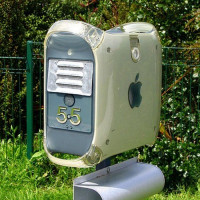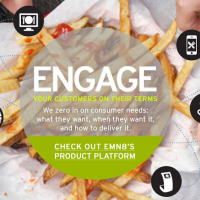“What do I want to eat?” In the era of the Web, where everyone is an expert, this seemingly simple question is becoming increasingly more difficult to answer. How do we sift through the deluge of information to find recommendations from people whose tastes are similar to our own?
I have written in the past about the growing number of food tech startups, such as Yummly and Grubster, who are trying their hand at innovating the dish recommendation experience. The ability to make accurate suggestions for dishes, however, requires an extremely granular understanding of each ingredient, cooking technique, and other variables that makes up that dish, as underscored during the Food & Menu Data: Building A Standard Interchange Format panel at FOOD 2.0.
Food Genius, the newly launched mobile application (available on iPhone & Android) that helps users find and share restaurant dishes based on their customized taste profile, thinks they’ve solved the problem- they’ve digitized the dish. The app relies on a combination of collaborative filtering and the parsing of data about the ingredients, cooking methods and other variables that comprise a dish into linked and relational data.
In english: They have created a classification to understand how the anatomy of a given dish relates to your “Taste Profile.” Combing your preferences with reviews shared across the internet enables them to make highly accurate recommendations. The app’s database currently has over 4,000 Chicago-based restaurants and 150,000 dishes.
I had a chance to speak with Food Genius founder and CEO Justin Massa about how the app works and the lessons he’s learned about human nature and building a data-driven startup.
____________________________________________
Danielle Gould: What is the inspiration behind Food Genius?
Justin Massa: It’s far too hard to answer the question, “What do I want to eat?” Current restaurant review websites lack dish-level granularity and, more importantly, don’t give you tools to sort the signal from the noise. There’s no way of telling which reviewers share your palate or who is actually an expert versus who just has an axe to grind.
We started Food Genius to help everyone eat awesome food when they dine out. Life is too short to eat crappy food and gripe about it; we want to generate a more positive conversation about dining out.
DG: How does the site work and what differentiates it from other restaurant recommendation sites?
JM: Food Genius, right now, is a mobile app (native on Android, mobile web for iPhone and other platforms). Fire it up on your phone and we’ll display nearby dishes; save dishes to your “Faves” list or recommend things you’ve already eaten and we’ll quickly get smarter, making better-and-better suggestions. Find a dish you love, and Food Genius can share that recommendation with Twitter and Facebook.
The major distinction with our approach is how we leverage data; we parse each dish into linked and relational data around ingredients, cooking methods, spices, regions, and a series of intangibles and then use that data to make highly accurate dish suggestions. We also pre-load as much data as possible; for our beta launch in Chicago, we have more than 150,000 dishes across more than 4,000 restaurants in the app.
DG: What problem are you solving?
JM: How we access food recommendations is broken on the web. In the offline world, we’ve gone to someone we perceive as having expertise – a friend, professional critic, hotel concierge, etc – and then would get a recommendation that came almost always with a restaurant and a dish. If the food was good, we’d go back to that person; if it was bad, we didn’t. And, when we found a dish that changed our lives, we’d rave about it to anyone / everyone.
Food Genius aims to solve this problem by surfacing dishes that you’re inclined to love because of what’s in them and are recommended by people who share your tastes. And when you find a dish that moves you, we make it dead simple to rate and share that dish in a way that leverages that data to deliver better suggestions to you and others.
 DG: You refer to the site as the ‘Netflix for Foodies.’ Could you describe what is unique and innovative about both your recommendation algorithm and how you’ve structured your data?
DG: You refer to the site as the ‘Netflix for Foodies.’ Could you describe what is unique and innovative about both your recommendation algorithm and how you’ve structured your data?
JM: Our approach is unique in that we seek to truly understand what is in and about each dish. Whether it’s the crunch of fried chicken, the creamy smoothness of a great potato and leek soup, or the fresh spicy-ness of a great arrabiata, Food Genius understands dishes in a unique and powerful way. Some of this is our own ‘secret sauce’, but at the core of our approach is applying the same taxonomy and logic to each and every dish that we parse. This allows us to understand a little bit of what you eat and project out taste to a large number of dishes.
DG: Food Genius has been through a number of iterations. Could you describe those and what about market demand influenced each version?
JM: The biggest evolution of the company has been around the data. We’ve gone through a number of experiments in how we acquire it, how we process it, and how we leverage it to make suggestions; there’s a ton yet left to do, but we’ve made enormous progress over the last few months. More than anything, we’ve learned that our tastebuds are highly mathematically inconsistent, which leads us to handle taste data in some interesting and unique ways.
DG: What is your business model?
JM: We think there is incredible value in understanding who enjoys eating what, where, and when. There are a number of ways to deliver this kind of insight to an array of customers, from manufacturers of consumer packaged goods to the mom-and-pop restaurant that wants to do a better job of pricing.
DG: What are the greatest lessons you’ve learned about building a data-driven startup?
JM: This is a devil-is-in-the-details business; understanding your data and its metadata is incredibly important. Know what you have, know what you don’t have – and have a plan to get it.
DG: Could you tell us about some of the interesting / unexpected things you’ve learned about human nature through your exploration of both human data parsing vs machine parsing?
JM: We don’t have a great understanding of what’s in the food we eat when we dine out. In the beginning, Food Genius was very ingredient-based; we’d show people a list of ingredients and ask them to adjust sliders as a way to start their taste profile. One of our early testers slid cilantro to the left (rating it low) and then was frustrated that we never suggested Mexican food. When I shared that a good chunk of Mexican dishes had cilantro, this tester said, “For real? Well, I guess I do like cilantro.”
DG: What excites you most about food and tech?
JM: The restaurant industry has been relatively slow to adopt tech, and i think that it represents a huge opportunity. Connecting consumers to foods that they love is a mission that we share with a slew of awesome startups in this space, and yet I don’t feel like this arena is anywhere close to crowded. I feel that the food-tech space is on the cusp of amazing things.





